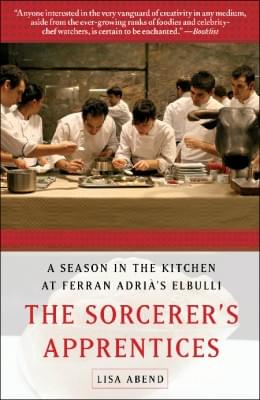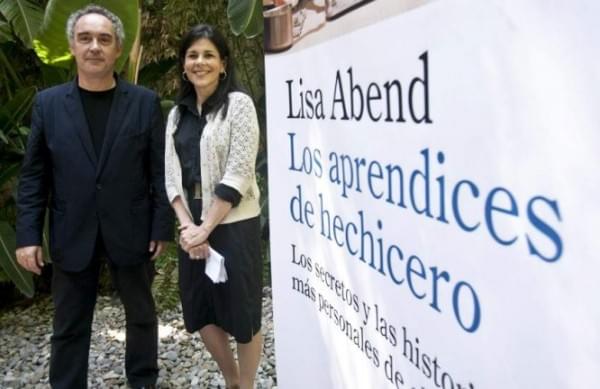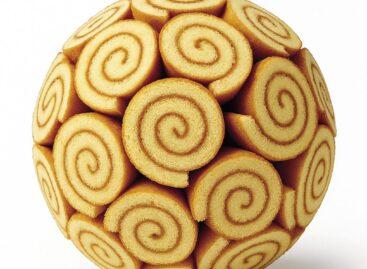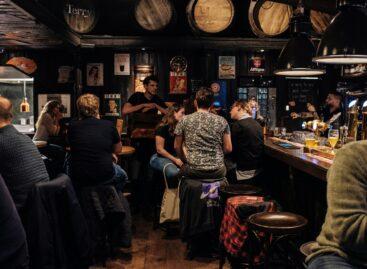The most well-known chef of the world is a journalist
Lia Abend is working as a journalist at Time magazine, and still she is probably the most popular gastroblogger of the world. The magazine has made an interview with the young lady.
Q: Lisa, how did you end up shadowing the crew at El Bulli and why El Bulli?
The first time I went to elBulli was for a story about Ferran. I walked into the kitchen, and was struck by the sight of 15 or so young cooks in two straight lines removing pine nuts from pine cones. When I walked back in about an hour or so later, after interviewing Ferran, they were still at it. It made me wonder, “Who are these people, willing to do this kind of tedious labor?” And that was the seed. At first I thought it would just be an article, but later I realized there were so many stories there that it required a book.
As for why elBulli, well, I don’t think it’s an exaggeration to say that it’s the most creative, influential restaurant in the world. As someone who writes frequently about food, where else would you want to be?
Q: In 'Sorcerer's Apprentices' there is the Eduard-Ferran-Oriol trio, tell us a bit about the dynamic?
There are actually three chefs de cuisine at elBulli: Eduard Xatruch, who runs production, Mateu Casañas, who is in charge of pastry, and Oriol Castro, who is in charge of what they call “creativity.” Each of them is roughly equal to each other, but their relationships with Ferran differ. Eduard has, by far, the hardest job of the three since it’s up to him to enforce discipline and make sure that everything in the entire kitchen runs as it should. Mateu has roughly the same responsibilities, but on a smaller scale—though he also develops new recipes. Oriol probably has the closest relationship to Ferran. They work together every day developing new dishes, and in many ways, their minds and palates have merged. They have a truly symbiotic relationship.
On several occasions, Ferran commented to me that all three were absolutely vital to elBulli, and that he couldn’t run the place without them.
Q: Reading the first chapter, people's movements around the kitchen have the feel of a ballet in its rehearsal stages, is it an accurate description?
Absolutely. In fact, ‘ballet’ is the word Ferran uses to describe it.
Q: Is kitchen at El Bulli very crowded or is there room to move?
Sounds strange to say, but it’s both. There are 45 people working in that kitchen at a time. You would think it would be chaos, but when everything is working as it should (which is most of the time) it flows nicely.
Q: The season pre-opening stage as you portray it is a mix of adrenaline rush and tension. Does presence of some veterans on the team balances that?
Definitely. Oriol, Eduard, and Mateu has each been at elBulli for more than a decade. Sometimes I think the three of them could run that entire restaurant by themselves.
Q: In the early part of the book you mention Ferran Adria getting very upset by a quote from Santi Santamaria that 'El Bulli' food makes people sick. Did Ferran at the same time use that 'critic' to emphasize best practices in food handling?
ElBulli has always used excellent food-handling practices.
Q: Did you see a lot of 'fat Americans' with a 'Skinny New' wife at the restaurant?
I saw a lot of everything. Everything from ambassadors and celebrities to young foodies in jeans and flip flops. There’s even a taxi driver from the nearby town of Roses who saves his money and comes once a year.
Q: Obulato is used both for an asparagus canape and a cone filled with pine nut praline, why do they call second one a ravioli?
The obulato is more a structural base than anything, and like a piece of pasta or bread, it can be shaped into a lot of different forms and textures. For the pine nut ravioli (or shabu shabu), the obulato is first folded into a cone, then filled with the praline, then sealed so that it make a closed triangle. It doesn’t look exactly like a raviolo, but it’s close enough. And names at elBulli are supposed to be evocative, more than exact. As Ferran says, they’re critical to helping the diner “enter into the game.”
You can read the erntire interview at TIME magazine.
Related news
Related news
We are optimistic at the end of 2025
🎧 Hallgasd a cikket: Lejátszás Szünet Folytatás Leállítás Nyelv: Auto…
Read more >Anti-drug regulations for restaurants to be relaxed from 2026
🎧 Hallgasd a cikket: Lejátszás Szünet Folytatás Leállítás Nyelv: Auto…
Read more >






